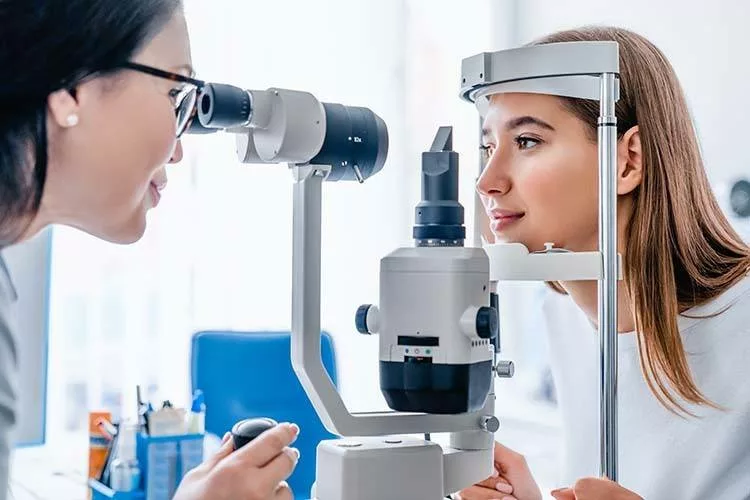The Significance of Regular Examinations with an Eye Doctor Optometrist
The Significance of Regular Examinations with an Eye Doctor Optometrist
Blog Article
Discovering the current Technical Improvements in Optometry and What They Mean for Optometrists
From the accuracy of Optical Comprehensibility Tomography to the nuanced understandings offered by AI-driven diagnostic tools, these advancements are establishing new standards in individual analysis and therapy. As these innovations permeate the practice, optometrists are faced with the difficulty of accepting these devices to boost person outcomes.
Developments in Diagnostic Equipment
Progressing the area of optometry, technologies in analysis devices have actually revolutionized the way eye care specialists evaluate and diagnose aesthetic disabilities and ocular conditions. The previous years has actually witnessed significant technological advancements, enabling more comprehensive and exact evaluations. Optical Comprehensibility Tomography (OCT), as an example, supplies high-resolution cross-sectional pictures of the retina, enabling the early discovery of illness such as glaucoma and age-related macular degeneration. This non-invasive imaging technique has actually come to be indispensable in contemporary optometric technique.
One more secret development is the introduction of sophisticated corneal topography systems, which map the surface curvature of the cornea with accuracy. These tools are especially beneficial for fitting call lenses and diagnosing corneal conditions. Digital retinal imaging has changed typical ophthalmoscopy, offering detailed, panoramic views of the retina that help with complete aesthetic exams.
The development of wavefront aberrometry has also been essential, allowing the analysis of refractive errors with unrivaled accuracy (Opticore Optometry). This innovation assists in personalizing restorative lenses and improving surgical outcomes for refractive surgeries. Collectively, these analysis innovations encourage eye doctors to provide exceptional client treatment, guaranteeing very early intervention and tailored therapy approaches, ultimately improving aesthetic health and wellness outcomes
AI in Patient Administration
Building on the foundation of sophisticated diagnostic devices, the unification of fabricated knowledge (AI) in individual management stands for a transformative jump for optometry. AI systems are progressively employed to improve effectiveness, accuracy, and customization in client care. By assessing huge amounts of information, AI can determine patterns and predict possible ocular problems, allowing eye doctors to customize interventions extra successfully. This ability is essential in taking care of chronic eye conditions such as glaucoma and diabetic retinopathy, where very early discovery and continuous tracking are essential.
Moreover, AI-driven systems help with streamlined person interactions and management processes. Automated scheduling, digital examinations, and customized follow-up plans not just boost patient fulfillment however likewise optimize time monitoring for practitioners. These systems can triage clients based on the necessity of their conditions, ensuring that those in critical requirement receive punctual interest.
Furthermore, AI improves decision-making by giving eye doctors with evidence-based recommendations and treatment pathways. By integrating information from electronic wellness records, AI tools provide understandings that notify medical choices, lowering the threat of mistakes and boosting person outcomes. As AI remains to develop, its role in person administration will likely increase, improving the landscape of optometric care.
Developments in Retinal Imaging
In the realm of optometry, retinal imaging has actually witnessed exceptional technical innovations that are improving diagnostic capacities and patient care. Technologies such as Optical Coherence Tomography (OCT) and fundus photography have actually revolutionized how eye doctors analyze the retina and visualize. OCT, specifically, gives high-resolution, cross-sectional photos of the retina, enabling the detailed assessment of its layers. This ability is invaluable for early discovery and management of conditions like glaucoma, diabetic retinopathy, and age-related macular deterioration.
Boosted imaging modalities like OCT angiography are additional refining diagnostic precision. Optometrist Chino. Such advancements assist in the recognition of minute retinal changes that could indicate disease development.
In addition, advancements in man-made intelligence are boosting retinal imaging by making it possible for computerized analysis of big datasets. These systems aid eye doctors in identifying patterns a sign of pathology, consequently enhancing diagnostic precision and efficiency. Collectively, these innovations are changing retinal imaging into a keystone of contemporary eye treatment, improving end results and expanding restorative opportunities.
Teleoptometry's Expanding Function
Teleoptometry is significantly coming to be a crucial my company component of eye treatment, driven by improvements in digital interaction and analysis devices. This is specifically useful in underserved and country areas where access to specialized eye care is commonly restricted.
The integration of artificial intelligence (AI) more enhances teleoptometry, allowing the evaluation of aesthetic information and aiding here in the discovery of ocular problems such as glaucoma and diabetic person retinopathy. AI-powered algorithms can quickly translate intricate imaging data, offering optometrists with important insights that strengthen medical decision-making.
Moreover, teleoptometry sustains continuity of treatment through seamless integration with electronic health and wellness documents (EHRs), allowing eye doctors to maintain thorough individual histories. When consulting with different experts., this makes certain that patients obtain individualized and constant treatment even.
Regardless of these advantages, challenges continue to be, consisting of guaranteeing information safety and security and managing individual assumptions. Teleoptometry stands for a considerable stride towards more obtainable, reliable, and patient-centered eye care. As innovation advances, its role is positioned to broaden even more.

Future Trends in Eye Treatment
A myriad of innovative fads is set to reshape the future of eye treatment, driven by technical innovations and the developing needs of patients. One significant trend is the combination of expert system (AI) in diagnostics, which guarantees to enhance the precision and efficiency of eye examinations. AI formulas can assess huge quantities of data from retinal images, possibly finding problems like diabetic retinopathy and glaucoma earlier than traditional approaches.
Additionally, individualized medicine is gaining grip in optometry, with genetic testing educating personalized therapy plans. This method intends to enhance patient end results by customizing interventions to specific genetic accounts. Wearable innovation, such as smart call lenses, is also on the horizon, using real-time monitoring of intraocular stress or glucose degrees, thus giving constant understandings into systemic and eye health.
The fostering of augmented truth (AR) and virtual truth (VIRTUAL REALITY) in training and client education and learning is one more arising trend. These modern technologies provide immersive experiences that can boost understanding and skills both for individuals and optometrists. As these patterns advance, optometrists must remain abreast of technological innovations to supply cutting-edge treatment, ensuring enhanced person outcomes and contentment in the dynamic landscape of eye care.
Final Thought

Jointly, these analysis developments empower optometrists to check my reference supply premium individual care, ensuring very early treatment and tailored therapy methods, ultimately boosting visual health and wellness results.

As these modern technologies continue to advance, optometrists should adjust and incorporate them right into practice, eventually optimizing process efficiency and boosting the standard of eye care provided to individuals.
Report this page